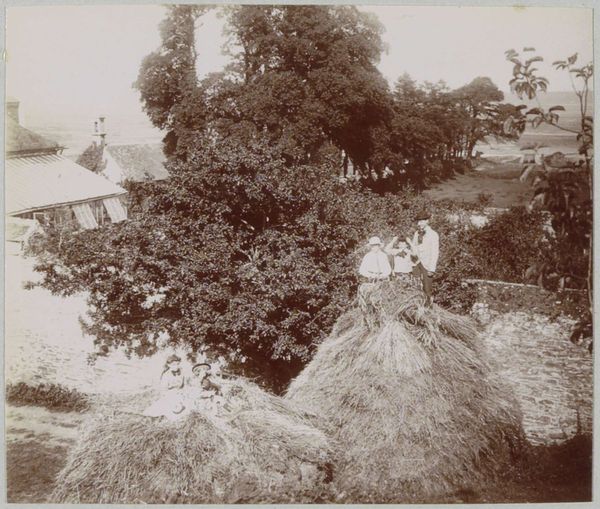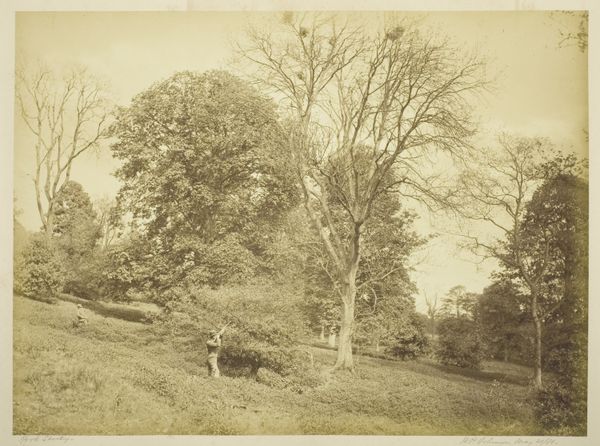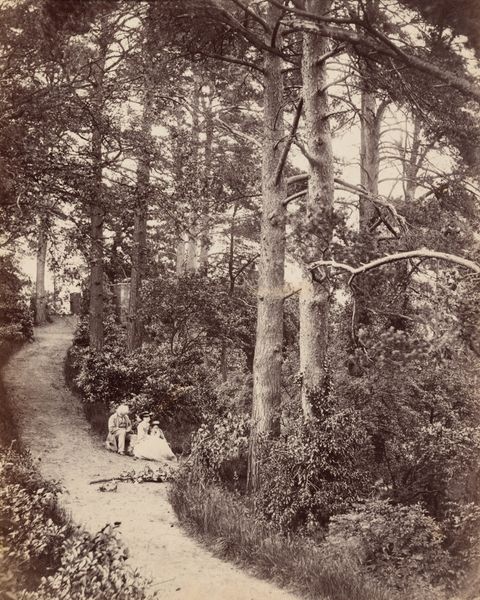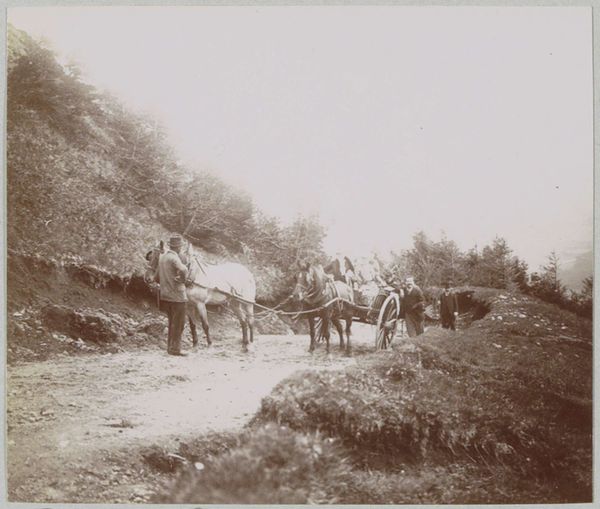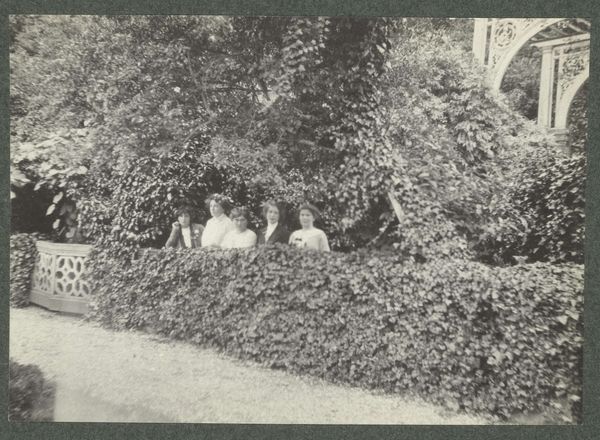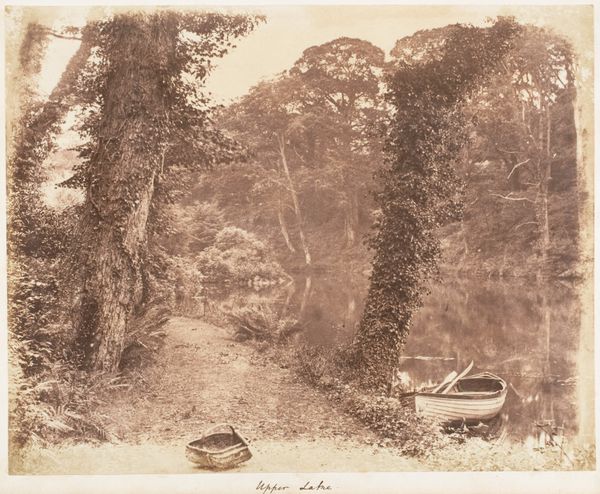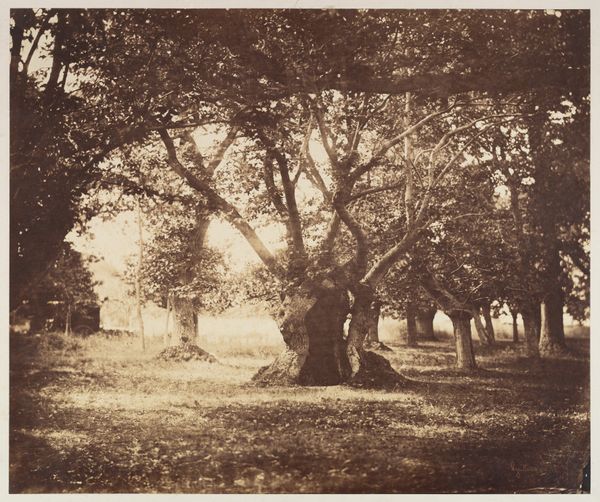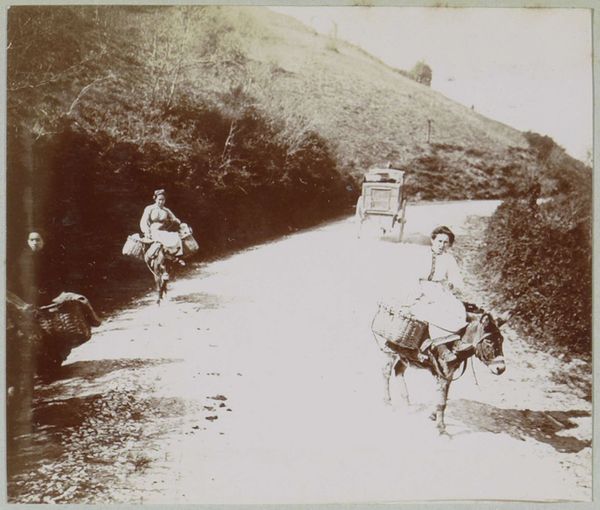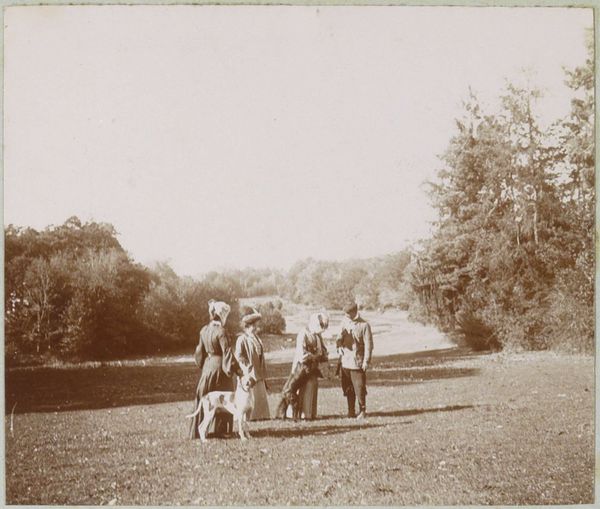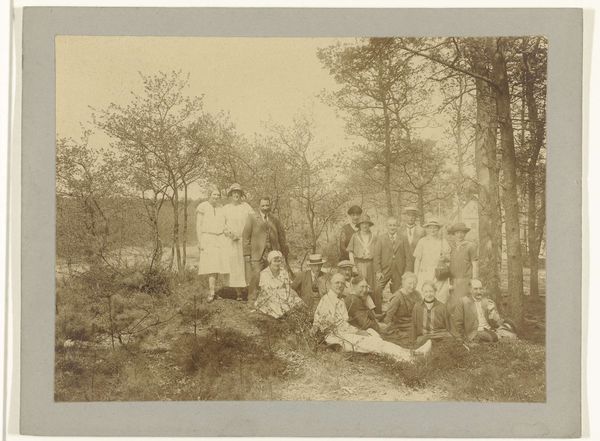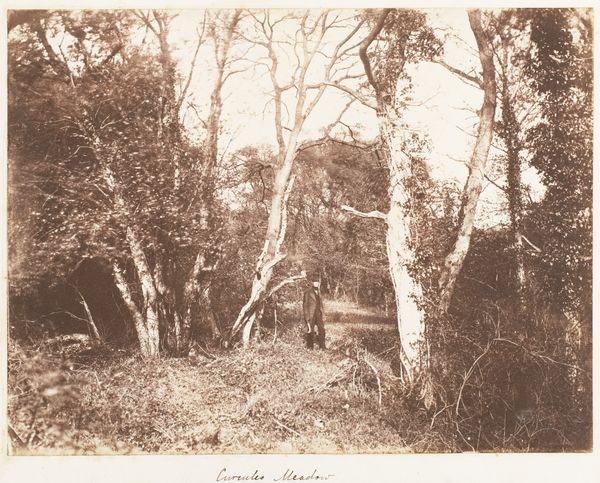
photography
#
portrait
#
pictorialism
#
landscape
#
photography
Dimensions: 26.9 × 37.4 cm (image/paper); 36.4 × 51.8 cm (mount)
Copyright: Public Domain
Curator: This serene landscape scene before us is “A Talk with the Keeper,” a photographic print by Henry Peach Robinson, dating from 1875 to 1881. It’s a classic example of Pictorialism. Editor: Mmm, it's beautiful, almost like a dream. So sepia-toned, soft. I feel like I’ve stepped into a forgotten world, a time where stillness was valued. And what is the talk about? Curator: Robinson was a leading figure in the Pictorialist movement. These photographers advocated for artistic merit in photography. Robinson was known for his staged, composite prints, and championed photography's status as an art form beyond mere documentation. He explored the possibility of creating art that conveyed a humanistic understanding through symbolism. Editor: So you are saying it's carefully constructed. And yet, it doesn’t scream of contrivance; it’s like stumbling upon this tableau. The lighting guides your eye… What’s fascinating is the layering—the leaning man, the small child, the upright woman. A social structure captured by means of posing? Curator: Precisely. Robinson's work engages with 19th-century notions of idealised rural life, which has been romanticised. Yet this romantic vision of the English countryside can be seen as masking the social inequalities. The presence of a “keeper,” most likely employed by wealthy landowners, reflects an existing hierarchical structure. Editor: Ah, the darker underbelly. It seems serene and idyllic on the surface, but it seems staged to reflect certain roles. Like we know the roles of women back then… but it doesn’t necessarily give us a true insight of the reality, right? And those class divides! They permeate the image's quietude. But how cleverly Robinson uses beauty to make his statements. Curator: And that beauty is powerful. It draws viewers in, inviting us to consider the complex interplay of nature, society, and representation. In light of class disparity, thinking about gender and positionality is useful here, even as that disparity hides behind pretty framing. Editor: It's more than just a pretty picture; it makes me think of the power structures. Thank you for highlighting all of this. Curator: It invites many perspectives. It's so rich.
Comments
No comments
Be the first to comment and join the conversation on the ultimate creative platform.
